For centuries, people have enjoyed the pleasing qualities of a cup of aromatic and invigorating tea. In Japan, one of the many countries that possess a rich tradition and culture, consuming this cherished beverage has become an integral part of life. From special occasions observed in ceremonies to different types of green teas, the splendour of Japanese teas has won over not only Japanese citizens but also international tea enthusiasts who savour its unique flavors.
This article offers a comprehensive look at the range of Japanese teas, from popular types such as Matcha and green tea to lesser known varieties like Bancha, Wakocha and Sobacha. The descriptions for each tea, along with the photos have been kindly provided by our friends at Tencha tea who are true Japanese tea experts. Additionally, they’ll be sharing their knowledge on useful Japanese tea terms, its health benefits, how to make Japanese tea, and which ones they recommend for newcomers. Let’s dive straight in with the 13 types of Japanese tea you should know!
Sencha
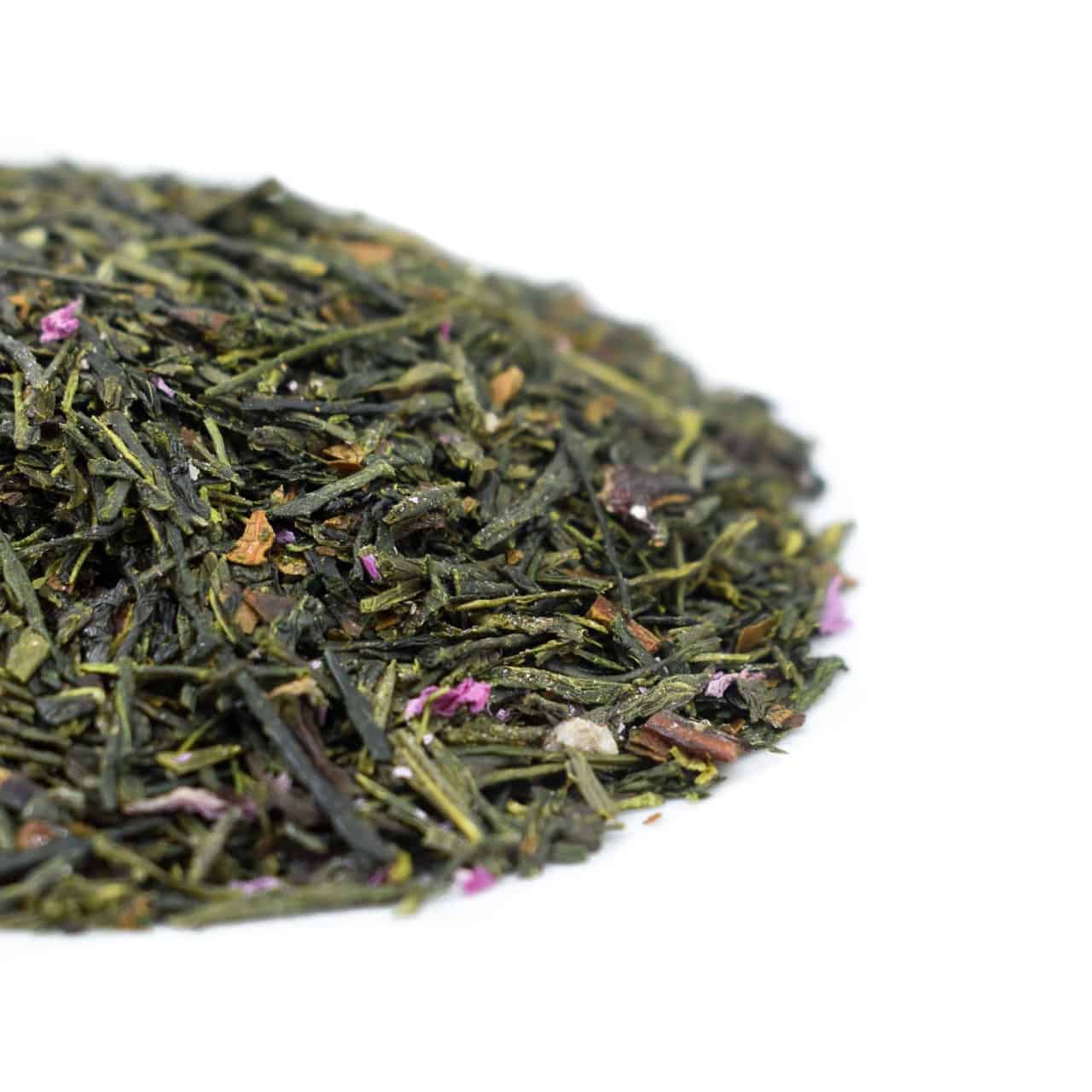
Sencha is the most common green tea produced in Japan. The leaves are steamed quickly after harvest to prevent oxidation then rolled into a needle shape and dried. Sencha is usually thought of as unshaded.
Kabusecha
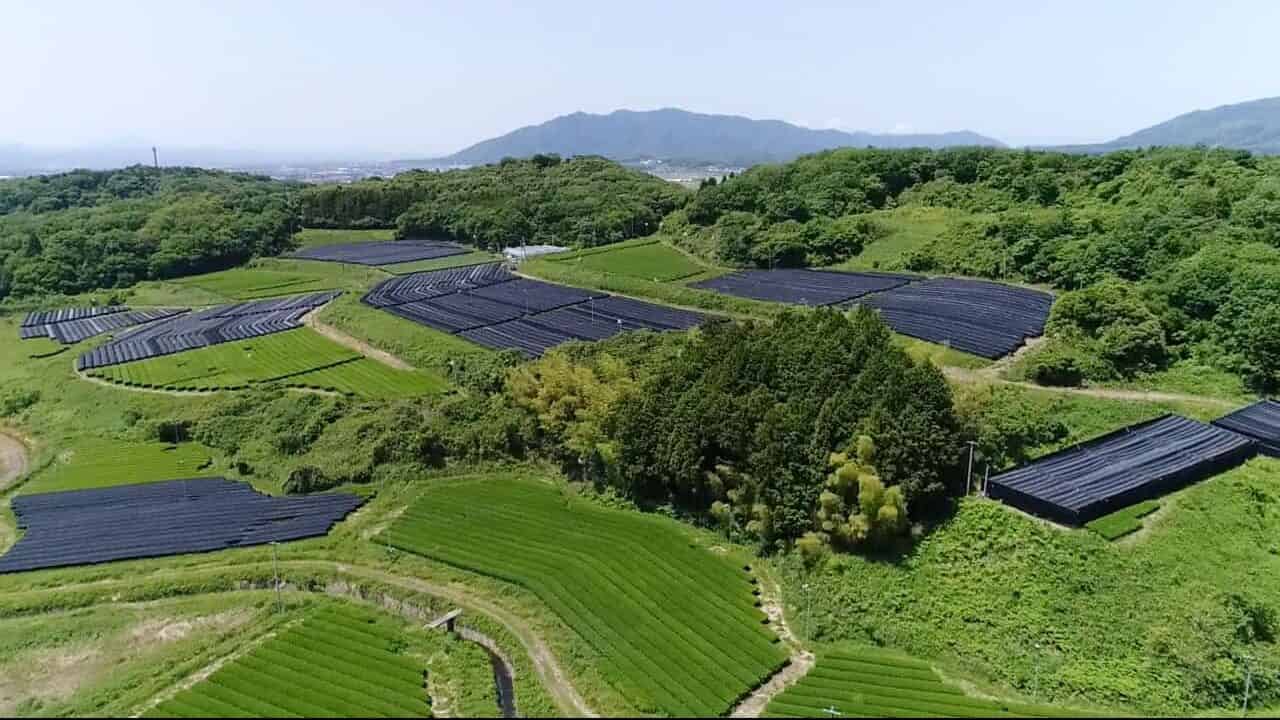
Shaded for just over a week, Kabusecha is between sencha and gyokuro in terms of umami flavour profiles.
Gyokuro

Gyokuro is a high grade green tea that is usually shaded for around 20 days. The production method is similar to that of sencha but the additional shading time gives a high level of umami to the resulting tea. Gyokuro should be brewed at much cooler temperatures to bring out the natural sweetness.
Matcha

Matcha is made from tencha tea leaves that have been shaded for at least three weeks before harvesting. The cultivation is similar to that of gyokuro but the leaves are not rolled. They are simply steamed, dried, sorted and then cut before they can be ground by stone mills to create a super fine green tea powder that can be whisked in a tea bowl, chawan, with water using a bamboo whisk, chasen.
Genmaicha
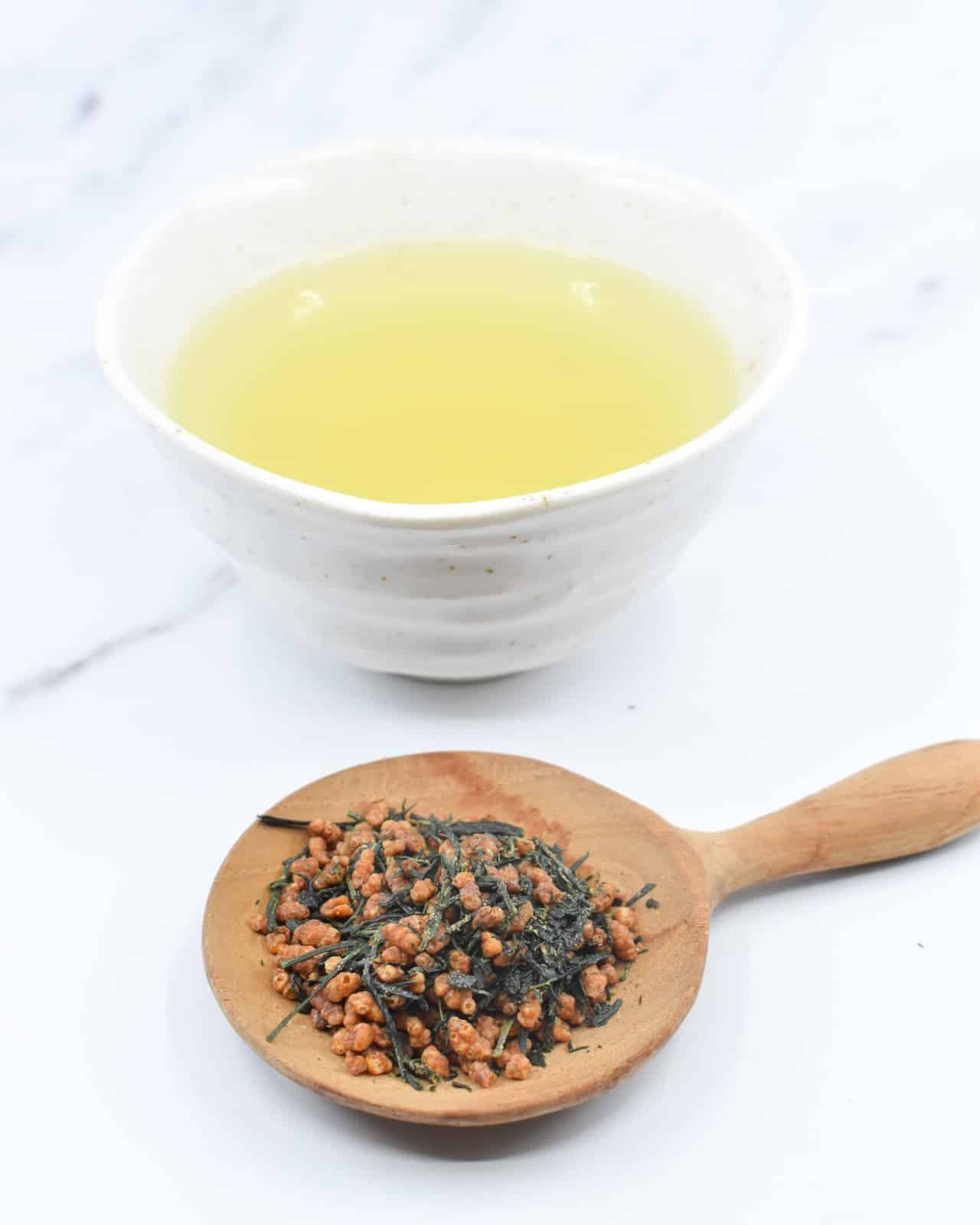
This tea is made by mixing tea leaves with toasted rice. Genmaicha is often made with bancha but can also be made with sencha or hojciha.
Hojicha

Although similar in appearance to dark tea, Hojicha is in fact roasted green tea. The tea is often made with bancha but can also be made with higher grade leaves. The roasting process removes most of the caffeine in the tea making it ideal for children, before bed or for anyone with a sensitivity to caffeine. If you’d like to learn more about Hojicha, please check our article on this unique Japanese roasted tea.
Bancha

Bancha means “ordinary tea “ and is seen as a tea for everyday consumption. This tea is harvested later in the year meaning the tea leaves have been allowed to mature and grow much larger. These leaves are thicker and take longer to release their flavour so may need longer brewing. Depending on where you are in Japan, bancha is often used as a term for Hojicha.
Wakocha

This is Japanese black tea. Although not as common as green tea, wakocha is becoming more popular and more farms are starting to produce it. As the Japanese genus of the tea plant has much lower catechins than plants used elsewhere in the world to create black tea the resulting drink is much lighter and less astringent with a mellow sweetness.
Oolong tea

Oolong is not very common in Japan but some farms have started to create this using techniques learned and brought back from China. This tea is withered and roasted as part of the production and can come in both green and dark varieties.
Kukicha
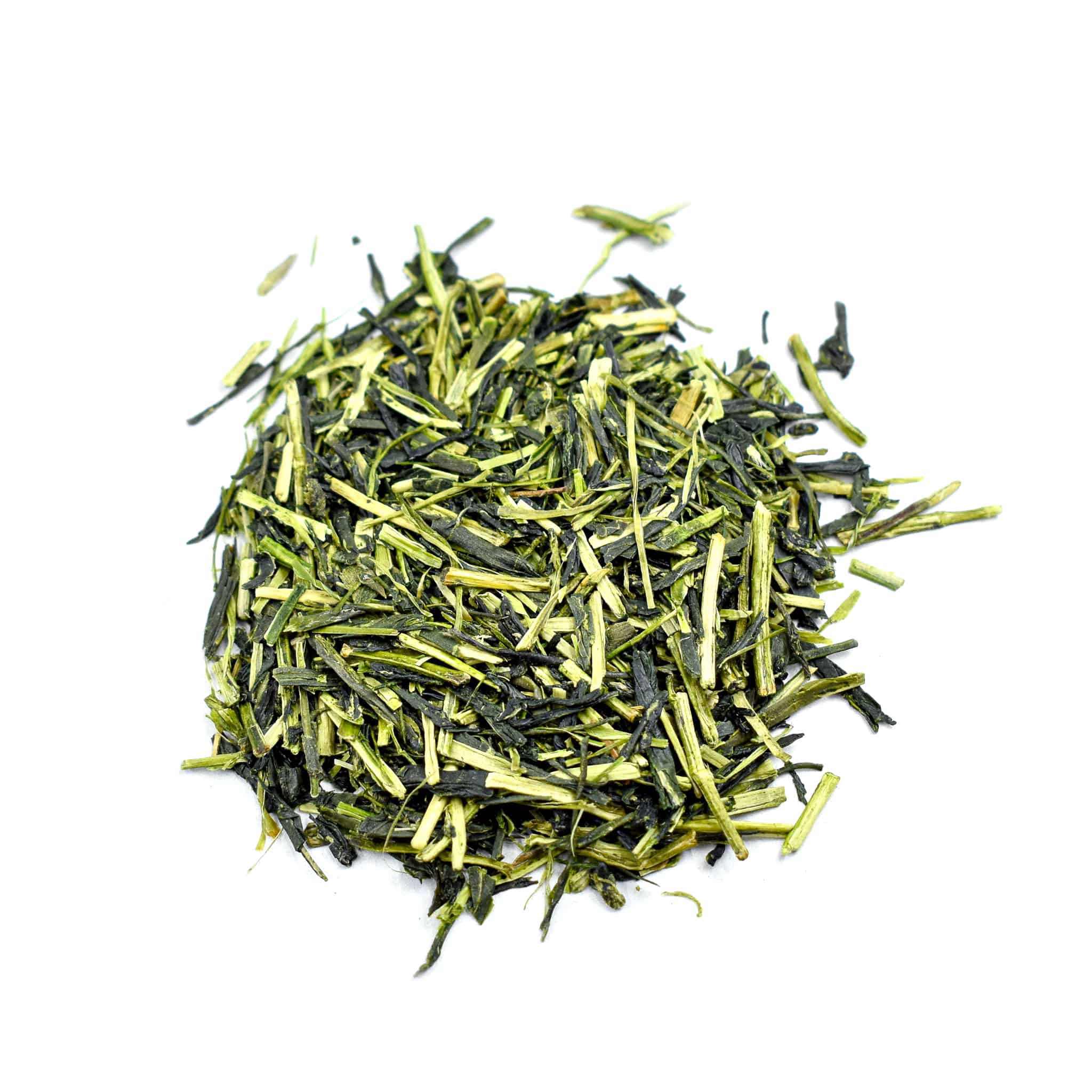
Kuki means stems so kukicha is stem tea. When processing green teas such as sencha an gyokuro the stems are usually removed. These stems are made into their own type of tea. These can be roasted into Hojicha, blended with rice for genmaicha or left as they are to create a green kukicha.
Kuromamecha
Tea made from roasted black soybeans, Kuromamecha has a deep earthy and sweet flavour with roasted notes. Naturally caffeine free this tea can be bought as whole or cracked beans.
Sobacha

Made from roasted buckwheat, sobacha is a delicious and healthy infusion with a beautiful golden liquor. Nutty and sweet this tea works deliciously alongside food.
Mugicha
Barley tea, mugicha is a natural antacid that can help relieve heartburn. This earthy roasted tea can be enjoyed hot or cold and is the perfect caffeine free alternative if you still want to have a flavour resembling roasted tea.

Other useful Japanese Tea terms:
- Ryokucha – This is just a generic Japanese term for green tea. It is often used when a company does not want to specify what type of tea leaves they have used.
- Asamushicha – Light steamed tea
- Fukamushicha – Deep steamed tea
- Aracha – unrefined and processed with leaf stem and veins of the leaves still intact. Often known as Farmers Tea
- Shading – this is the process of covering the tea bushes with either vinyl covers or traditional reed canopy. The shading process changes the chemical compounds in the tea bringing out more of the amino acids that give us umami and less of the catechins that give bitter flavour and astringency.
- Nihoncha – A term used to refer traditional Japanese teas
- Usucha – Thin tea: Used for more casual settings or as part of the tea ceremony where each guest will get their own cup with sweets.
- Koicha – Thick tea: This tea is very thick and viscous. Enjoyed at the most formal part of the tea ceremony, one cup would usually be shared among the guests. When buying matcha if the tea says it is “suitable for koicha preparations” you know it is a high grade.
What are the health benefits of Japanese tea?
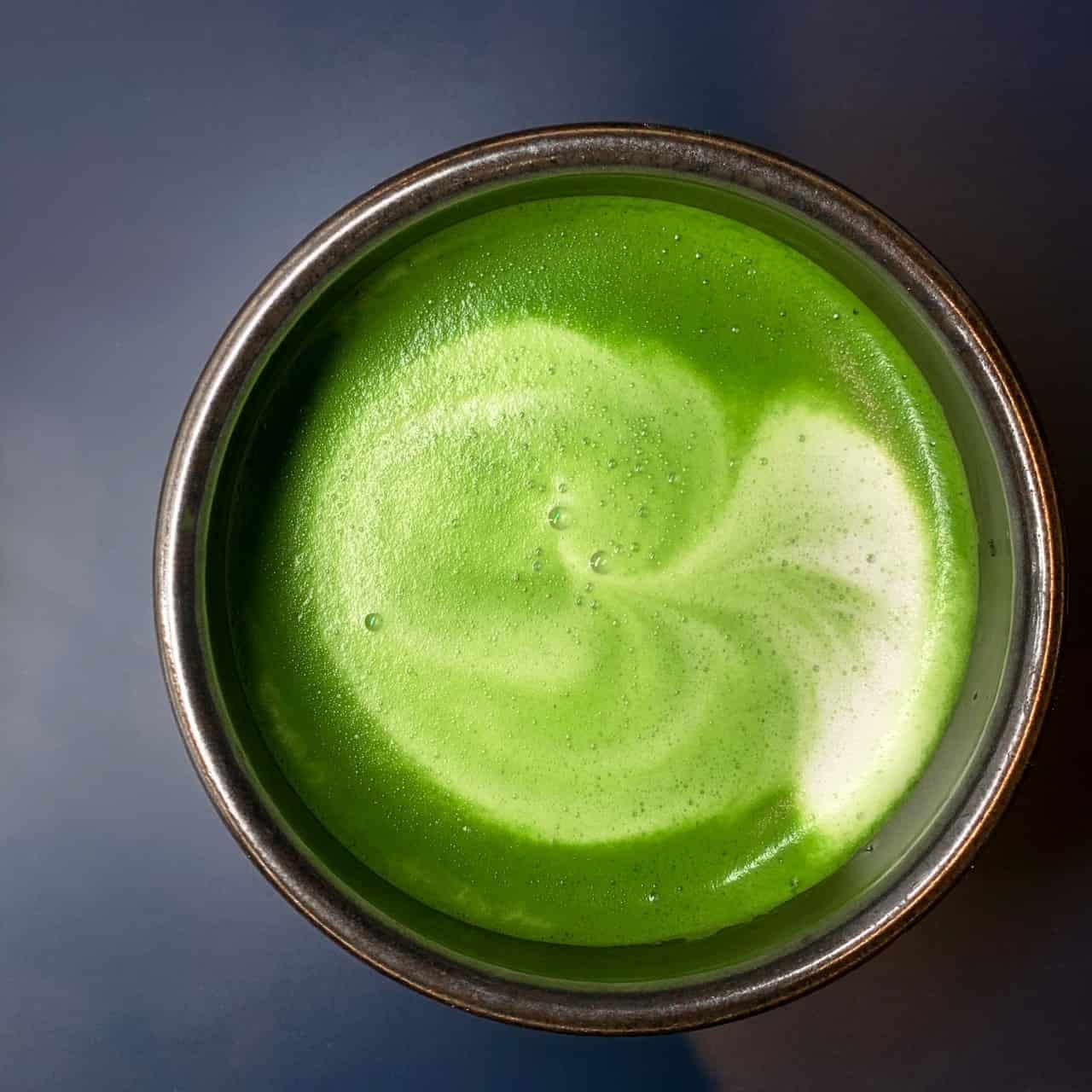
The Camellia sinensis plant or tea as it is better known has a wide range of health benefits and contains many bioactive compounds that are beneficial to our bodies.
Japanese tea in particular is special because the tea leaves are not allowed to oxidize after harvesting, making them extremely high in antioxidants that can help to boost our immune systems.
Compounds that are found in Japanese tea that have significant health benefits are:
- Catechins: these are a type of polyphenol found specifically in tea that gives us bitter flavours. These polyphenols contain highly potent antioxidants and can neutralise free radicals in the body. Catechins help to fight disease and boost your immune system. The most important of these is EGCE and it has been proven to aid heart health, manage cholesterol levels, plaque build up in the mouth and have cancer fighting properties.
- L-Theanine: This amino acid found in tea is present in much larger volumes in shaded green teas such as Matcha, Gyokuro & Kabusecha. L-theanine is what gives us umami flavour. This compound has a relaxing effect on the body. When we consume L-thanine our brains are stimulated to release alpha waves which help reduce stress, anxiety and can even work as a natural antidepressant. These waves also help us to retain information and stay focused. L-theanine also has anti-inflammatory, antioxidant and antiviral effects that help to boost our immune systems and fight against heart disease.
- Caffeine: A double edge sword, caffeine has both good and bad health effects for the body. Regular and moderate caffeine consumption has been attributed to help prevent heart disease and dementia as well as increasing alertness and improving exercise performance. Matcha green tea powder has a high level of caffeine but it is absorbed and released much slower than coffee meaning you won’t get the jitters and crash that is often associated with highly caffeinated beverages. If you want to get the health benefits of Japanese green tea but want to avoid caffeine, Hojicha is the perfect drink for you. It has all the other compounds found in tea but the roasting process burns off most of the caffeine.
- Vitamins: The tea plant contains many vitamins and minerals including high levels of A,C & E that are known to help against the common cold as well as reducing the appearance of fine lines and wrinkles.
How to make Japanese tea?

When you buy tea it should come with suggested brewing instructions from the seller but there are a few general guides to think about when brewing.
There are a number of factors to take into consideration to make yourself a great cup of tea:
- Temperature
For green tea it’s important not to use boiling water. Green tea can be scolded when it is over heated and this will bring out all the bitterness and astringency in the leaves. A good general rule of thumb for Japanese green tea is to brew around 70°C.
If you have a high grade Japanese green tea such as gyokuro we recommend even cooler at around 50°C and you will have a beautiful sweet and umami filled cup.
You can raise the temperature as you progress through infusions.
Darker teas and Hojicha are much more forgiving and can be brewed just off the boil.
PRO TIP: Always boil your water! Even if you are planning on brewing at 50°C you want to boil the water and then cool it down for the best flavour. This also removes any bacteria and helps to cook off any impurities and metallic flavour that may be in the water.
- Water Quality
This is really important as 99% of your cup is water! Ideally tea should be brewed with soft water. Hard water has many minerals including large amounts of calcium and magnesium that affect the flavour of the tea. We recommend filtering water before brewing to bring out the true flavour of the tea leaves. If you cannot filter the water and live in a hard water area you could use spring water as another option.
- Steeping Time
The time you steep your leaves will greatly affect the flavours that you extract from the leaves. For green teas we recommend starting at 60 seconds and see if you need more or less brewing time. For dark teas such as wakocha or oolong brew from 3-5 minutes.
PRO TIP Many Japanese teas can be brewed for multiple infusions. Especially with green tea the second infusion will be shorter than the first as the leaves have already opened up and will release their flavour quicker.
- Water to Tea Ratio
Each tea will taste quite different when you change these values. You may like a tea to be light and sweet so add less leaves or more water, or you may want it stronger and more smokey so add more leaves and less water.
General starting point ratio: 5g / 200ml for green teas and 3g / 200ml for dark teas.
Where to buy Japanese tea in the UK?
We always recommend buying from a specialist tea company like Tencha. Storage is really important for retaining the quality of tea. When you buy from a specialist you can trust that they care about the product and that they know how to handle it correctly.
Tips for buying out and about: Buying tea from shops is great if they are proper tea vendors as you can ask the seller for flavour profiles and brewing tips. If the tea is out on a supermarket shop floor it may get too hot or be exposed to light. Long exposure to warm temperatures will degrade green tea. In general it is also worth avoiding tea if it is sold in a clear glass container. It looks beautiful but light will degrade the tea leaf quality in terms of both flavour and health benefits.
Introduction to Tencha
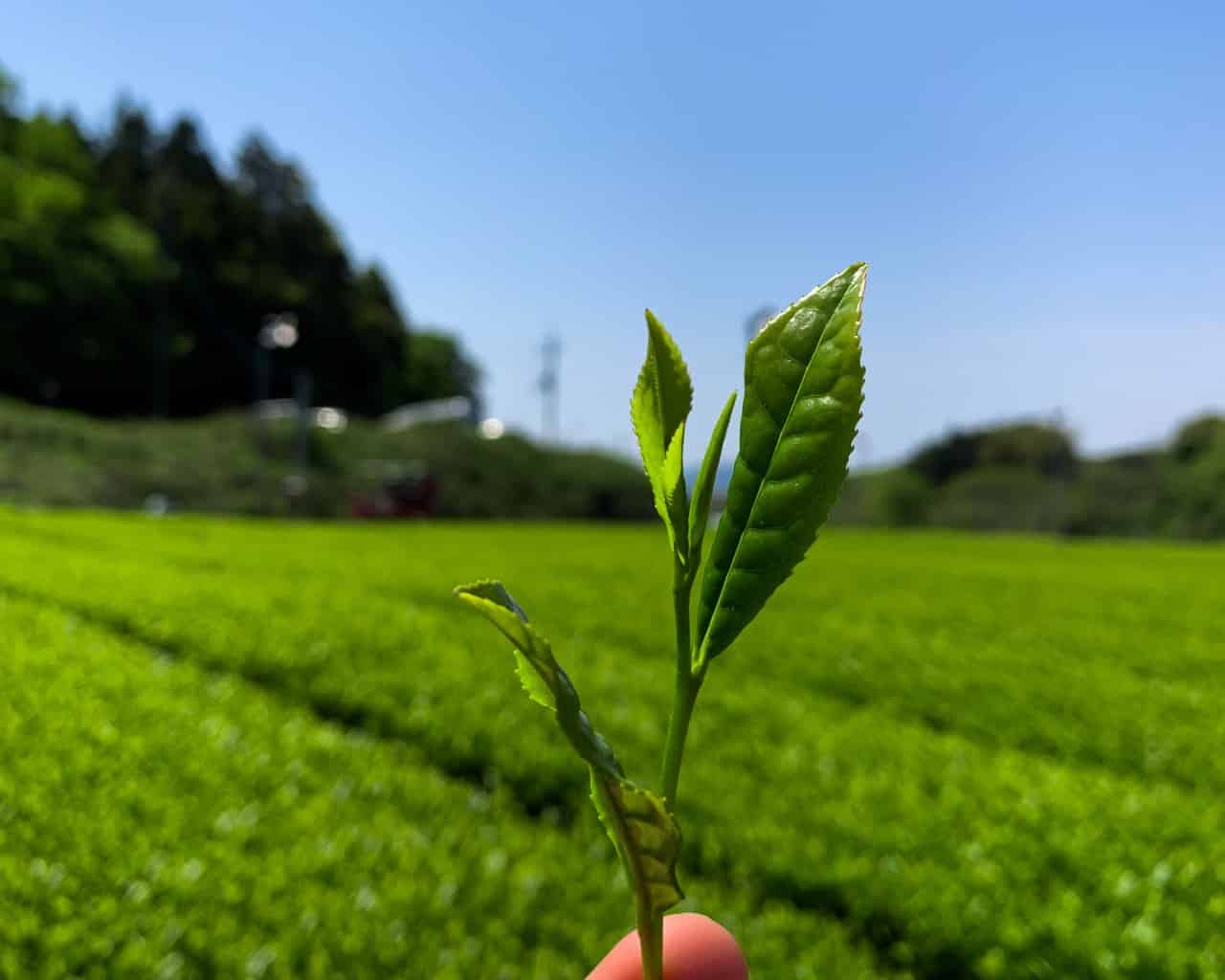
Tencha is a London based speciality Japanese tea and teaware brand, selling high quality teas and matcha powder from family run and independent producers across Japan. We’ll hand over to Tencha to introduce themselves in the next section, and explain what makes them stand out from the crowd. Without a doubt, they are extremely knowledgeable about Japanese tea, and really helpful to everyone wanting to learn more about the different types of tea and how to enjoy them at home.
What makes Tencha unique?

“There are many fantastic tea companies out there but I think what makes Tencha special is that we only specialise and sell Japanese tea. Although we love matcha and have a great selection we truly want to celebrate the wealth of loose leaf teas that Japan has to offer. We want to help consumers to try a wider selection and break down any barriers that may make these teas intimidating or inaccessible.
The tea industry in Japan is struggling as Japanese consumers have turned to coffee and the convenience of bottled tea and tea bags. Our mission is to help slow the decline of tea in Japan by spreading our love and passion for the amazing infusions coming out of this special tea region.
Education is key so we are always happy to talk to our customers about the teas we have to offer. We encourage anyone who wants to dip their toe in the Japanese tea pond to get in touch. Whether you are a novice or someone with more advanced knowledge we are more than happy to advise on tea flavours and help you choose a tea for you. If you are looking for a specific tea that you can’t find we are more than happy to try and procure it for you.”
What Japanese Tea would you recommend for beginners?

“There are many parameters to think about when brewing Japanese tea so we tend to recommend teas that are more forgiving to beginners. If you are looking for something green a genmaicha or kamairicha is good as they can take warmer temperatures without scolding. We always recommend Hojicha as there is such a wide variety of flavours to offer and again, you don’t have to be afraid of temperature.
We also always highly recommend cold brewing your Japanese tea. This is a great way to experience the sweet and fragrant notes of any green tea but also works deliciously with hojicha, wakocha and oolong.
To cold brew: Add between 10-15 grams of loose leaf tea to a large jug, top up with 1.5-2 liters of cold filtered water and leave this in your fridge overnight or for a minimum of 6 hours.
The cold brewing brings out sweetness and umami and stops any of the astringency in the leaf coming through.”
- For a refreshing taste: sencha, kabusecha, yuzu sencha
- For no caffeine: sobacha, mugicha, kuromamecha (hojicha has a very low level of caffeine if you are happy to have trace amounts)
- For something special: ice brew or 50°c brew gyokuro, matcha, shincha, sakura sencha
- For a roasted flavor: hojicha, genmaicha, mugicha
- For a rare cup: tencha, goishicha, sanpincha, Karigane, batabatacha
For more information on Japanese Tea

We hope you found this post on the different types of Japanese tea to be useful. If you are looking for more information on Japanese tea, we would of course recommend heading over to the Tencha website. Meanwhile, if you’d like to know about Japanese tea related events in the UK, please check our Japanese events page which we update every month.
In closing, we’d like to extend our thanks once again to Tencha for sharing their insights and providing the photos for this article. Looking forward to collaborating again with you!


